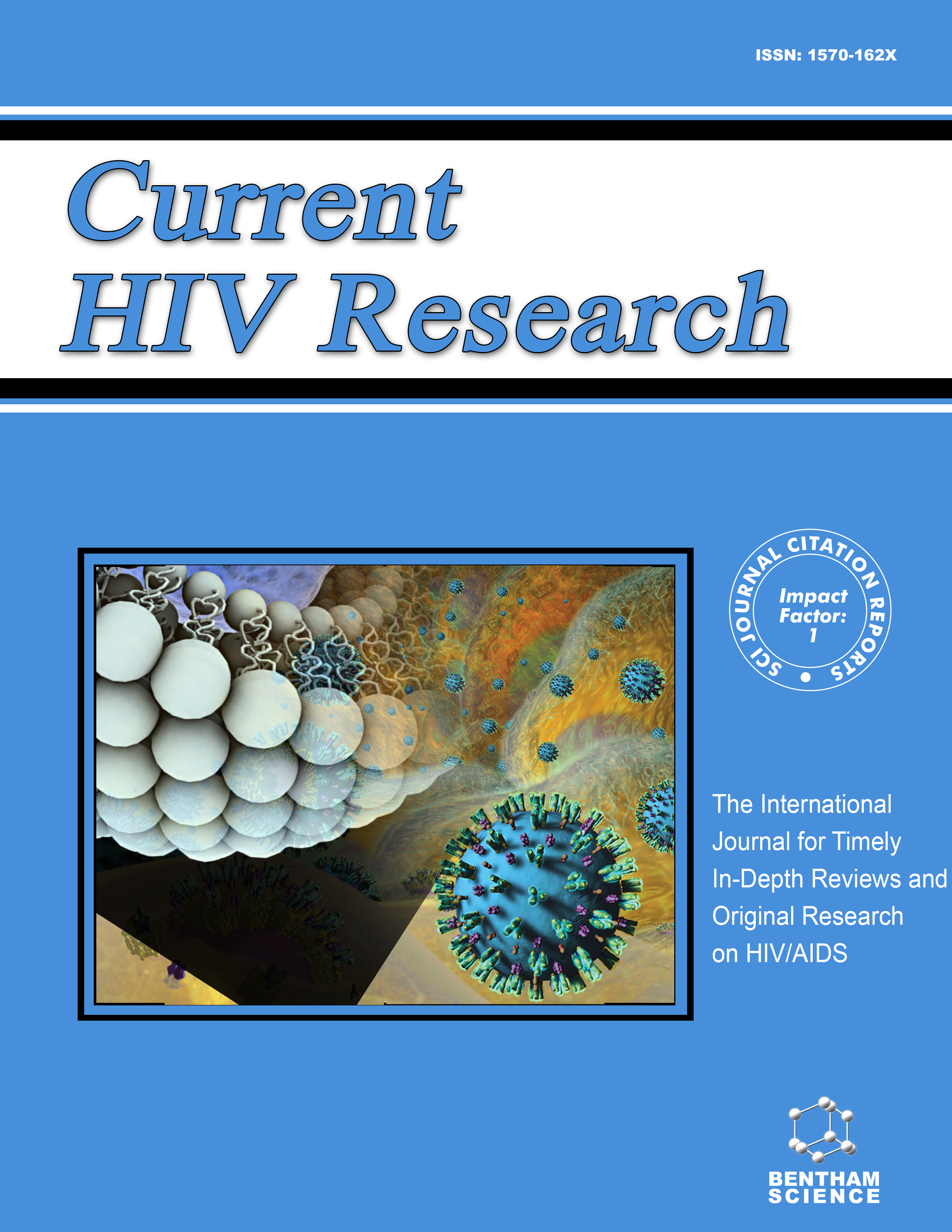- Home
- A-Z Publications
- Current HIV Research
- Previous Issues
- Volume 14, Issue 5, 2016
Current HIV Research - Volume 14, Issue 5, 2016
Volume 14, Issue 5, 2016
-
-
Astrocytes as an HIV Reservoir: Mechanism of HIV Infection
More LessAuthors: Guan-Han Li, Lisa Henderson and Avindra NathIf we have any hope of achieving a cure for HIV infection, close attention to the cell types capable of getting infected with HIV is necessary. Of these cell types, astrocytes are the most ideal cell type for the formation of such a reservoir. These are long-lived cells with a very low turnover rate and are found in the brain and the gastrointestinal tract. Although astrocytes are evidently resistant to infection of cell-free HIV in vi Read More
-
-
-
Overview on the Tricks of HIV Tat to Hit the Blood Brain Barrier
More LessHIV infection among AIDS patients is associated with dysfunctions in the central nervous system (CNS) at the late stages of the disease. HIV Tat protein is released extracellularly from the productively infected cells and play important role in successful HIV replication and activates the neighboring uninfected cells in the bystander fashion. The structural flexibility of Tat protein is one of the unique features, responsible fo Read More
-
-
-
HIV-1 Induced CNS Dysfunction: Current Overview and Research Priorities
More LessAuthors: Jeymohan Joseph, Deborah A. Colosi and Vasudev R. RaoBackground: Over the past three decades, the clinical presentation of HIV infection of the Central Nervous System (CNS) has evolved. Prior to wide spread use of effective antiretroviral therapy (ART), more than a third of infected individuals exhibited a range of neurocognitive and motor deficits that frequently progressed to severe dementia and paralysis. However, the use of ART has significantly decreased the prevalence of sev Read More
-
-
-
Mechanisms of HIV Neuropathogenesis: Role of Cellular Communication Systems
More LessAuthors: Shaily Malik and Eliseo A. EugeninBackground: One of the major complications of Human Immunodeficiency Virus (HIV) infection is the development of HIV-Associated Neurocognitive Disorders (HANDs) in approximately 50-60% of HIV infected individuals. Despite undetectable viral loads in the periphery owing to anti-retroviral therapy, neuroinflammation and neurocognitive impairment are still prevalent in HIV infected individuals. Several studies i Read More
-
-
-
Multiple Faceted Roles of Cocaine in Potentiation of HAND
More LessAuthors: Yu Cai, Lu Yang, Shannon Callen and Shilpa BuchBackground: While the advancement of highly active antiretroviral therapy (HAART) has transformed the course of HIV/AIDS from a death sentence to a manageable chronic condition, the prevalence of a constellation of neurological disorders collectively termed as HIV-associated neurocognitive disorders (HAND) continues to persist in these patients. HAND is characterized by cognitive dysfunction, depression, impaired memory a Read More
-
-
-
Opioids and Opioid Maintenance Therapies: Their Impact on Monocyte-Mediated HIV Neuropathogenesis
More LessAuthors: Matias Jaureguiberry-Bravo, Rebecca Wilson, Loreto Carvallo and Joan W. BermanBackground: HIV-1 enters the CNS within two weeks after peripheral infection and results in chronic neuroinflammation that leads to HIV associated neurocognitive disorders (HAND) in more than 50% of infected people. HIV enters the CNS by transmigration of infected monocytes across the blood brain barrier. Intravenous drug abuse is a major risk factor for HIV-1 infection, and opioids have been shown to alter the progressi Read More
-
-
-
HIV-1 Latency and Eradication: Past, Present and Future
More LessBackground: It is well established that antiretroviral therapy (ART), while highly effective in controlling HIV replication, cannot eliminate virus from the body. Therefore, the majority of HIV-1-infected individuals remain at risk for developing AIDS due to persistence of infected reservoir cells serving as a source of virus re-emergence. Several reservoirs containing replication competent HIV-1 have been identified, most notably Read More
-
-
-
Mechanisms of HIV Transcriptional Regulation by Drugs of Abuse
More LessAuthors: Mudit Tyagi, Michael Bukrinsky and Gary L. SimonBackground: There is a strong correlation between the use and abuse of illicit drugs and the spread of Human Immunodeficiency Virus (HIV). It is well established that illicit drugs users are a high risk population for infection with HIV with an increased rate of HIV transmission and replication. Cocaine, amphetamine, methamphetamine, heroin and morphine stand out as the most frequently abused illicit drugs and their use cor Read More
-
Volumes & issues
-
Volume 23 (2025)
-
Volume 22 (2024)
-
Volume 21 (2023)
-
Volume 20 (2022)
-
Volume 19 (2021)
-
Volume 18 (2020)
-
Volume 17 (2019)
-
Volume 16 (2018)
-
Volume 15 (2017)
-
Volume 14 (2016)
-
Volume 13 (2015)
-
Volume 12 (2014)
-
Volume 11 (2013)
-
Volume 10 (2012)
-
Volume 9 (2011)
-
Volume 8 (2010)
-
Volume 7 (2009)
-
Volume 6 (2008)
-
Volume 5 (2007)
-
Volume 4 (2006)
-
Volume 3 (2005)
-
Volume 2 (2004)
-
Volume 1 (2003)
Most Read This Month
Article
content/journals/chr
Journal
10
5
false
en


